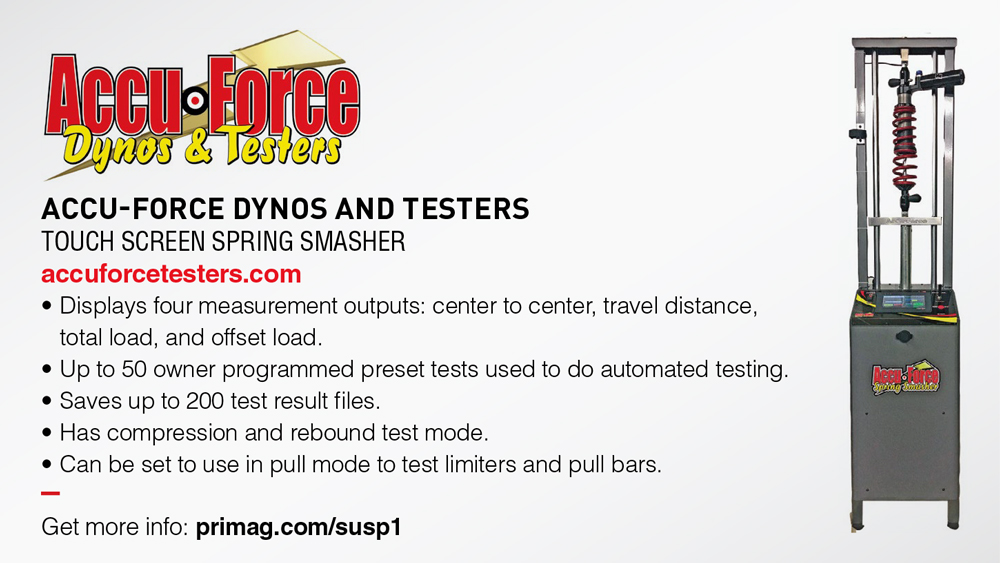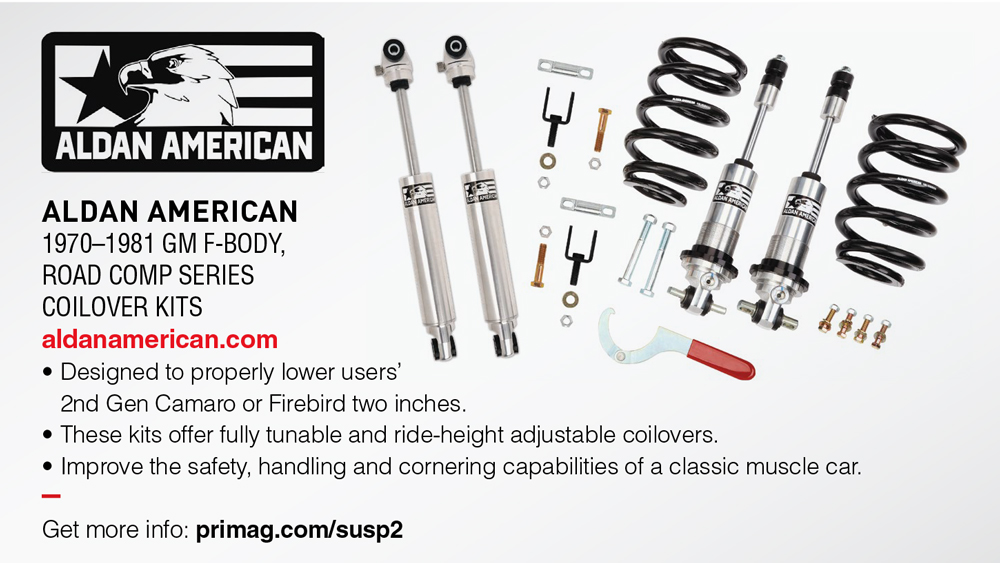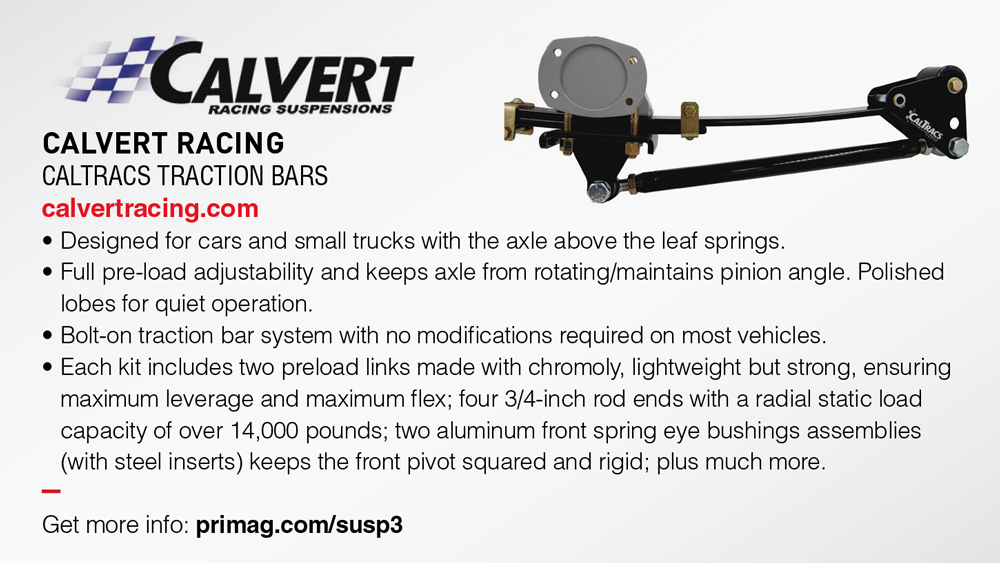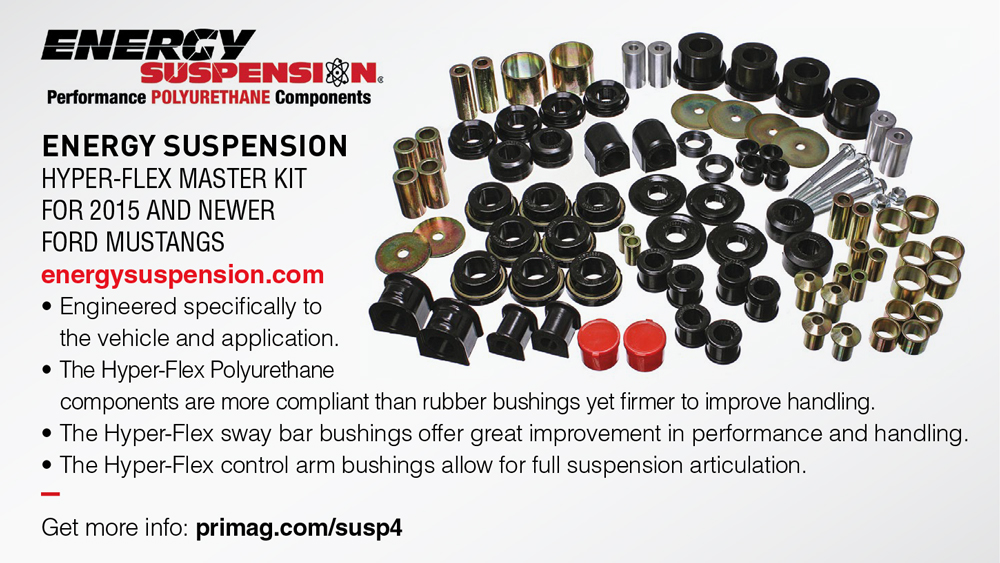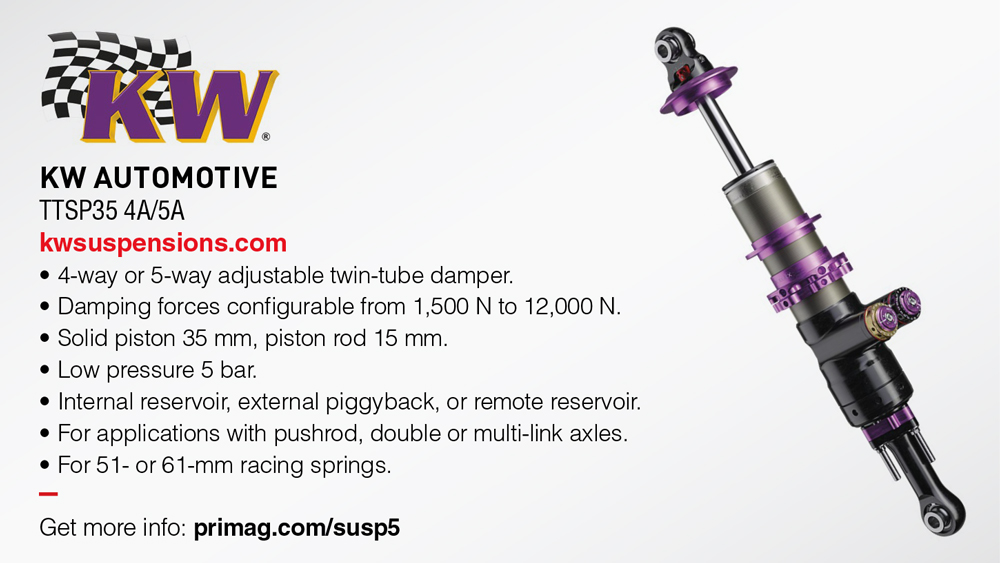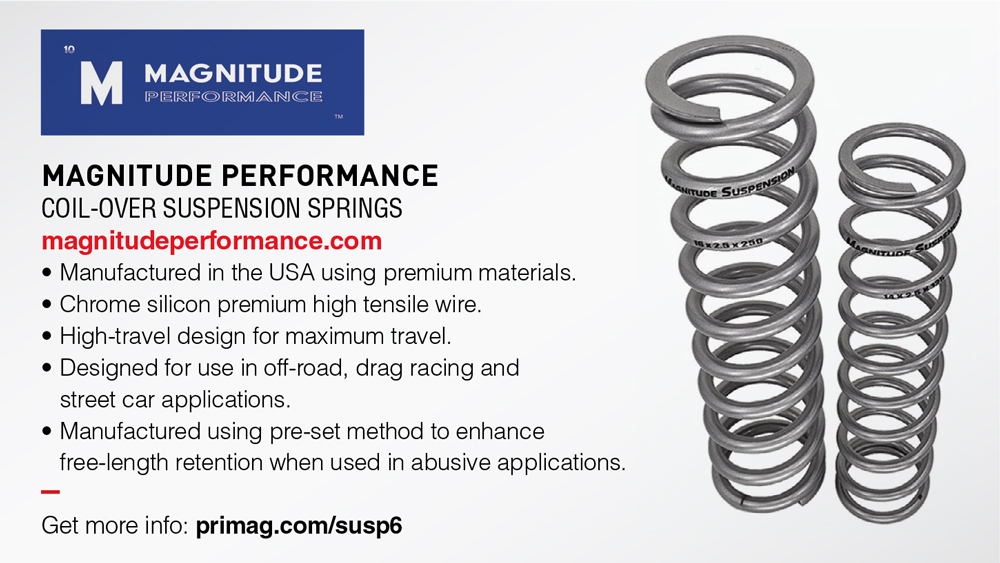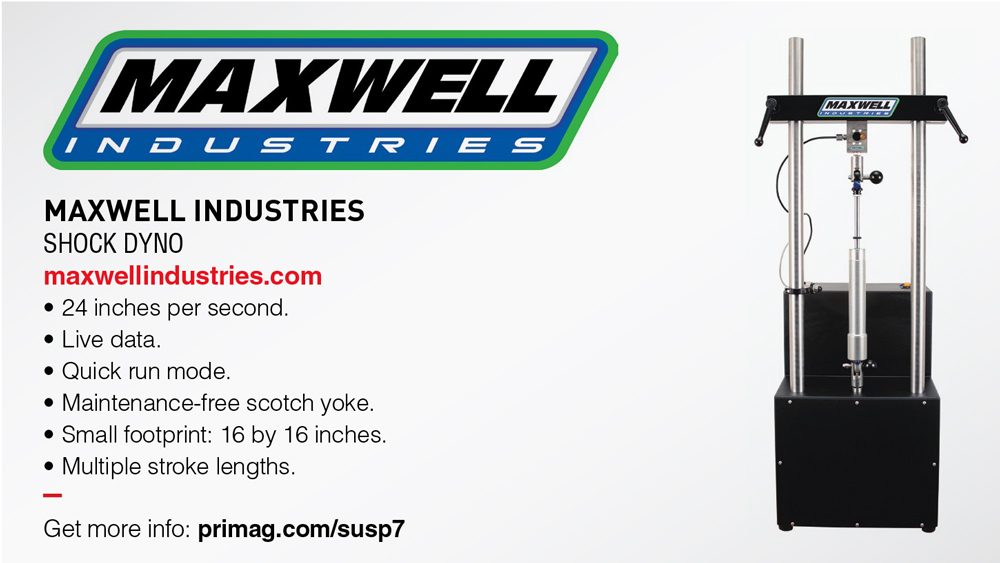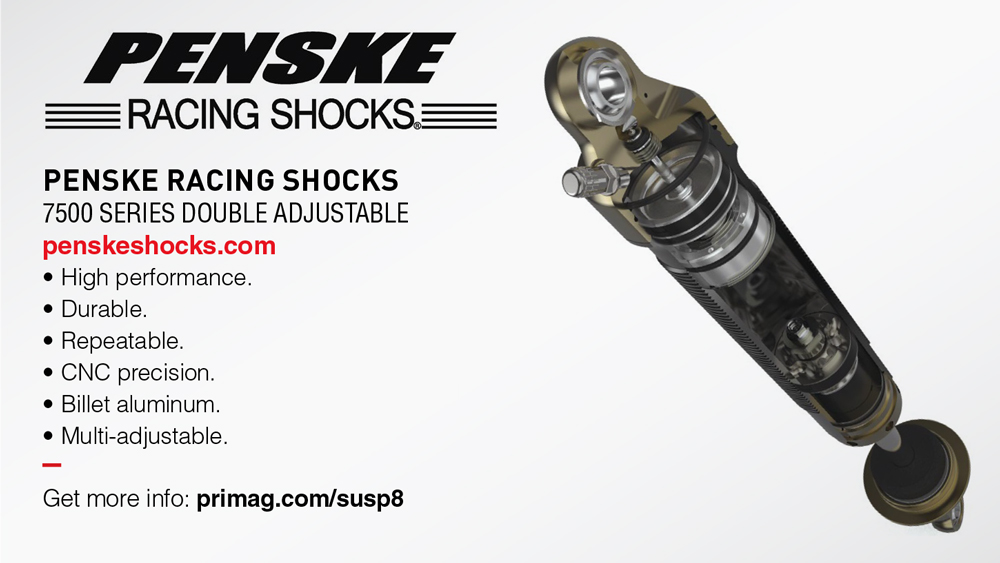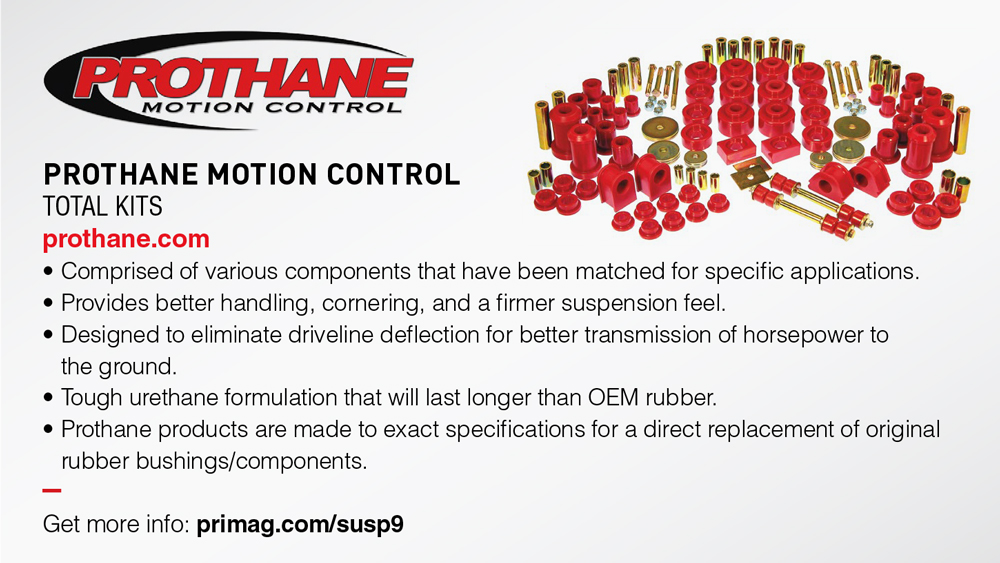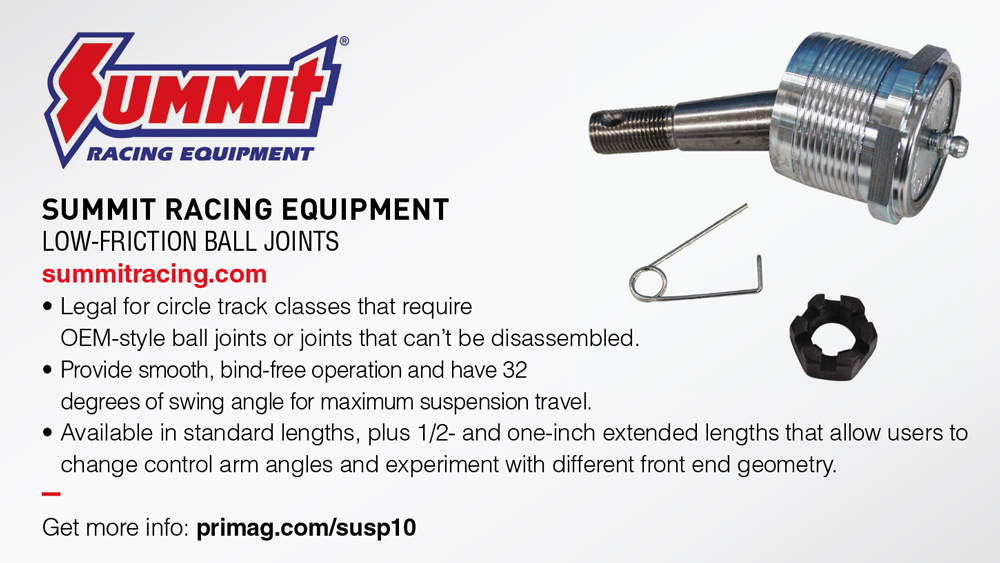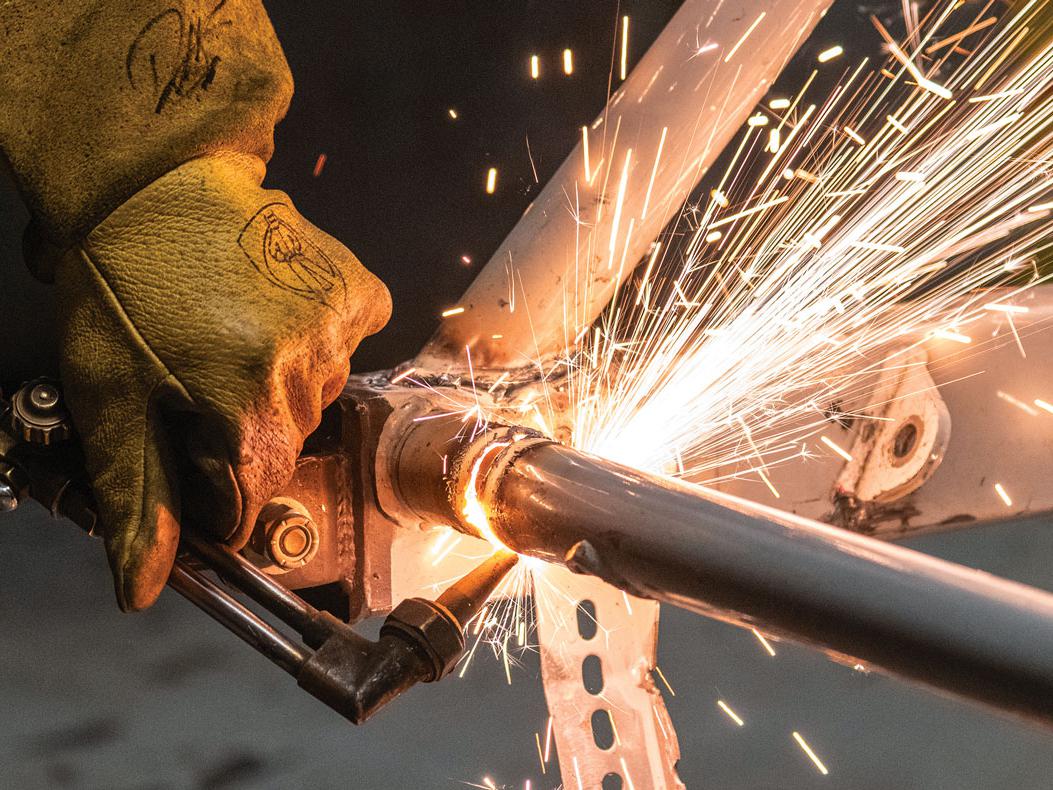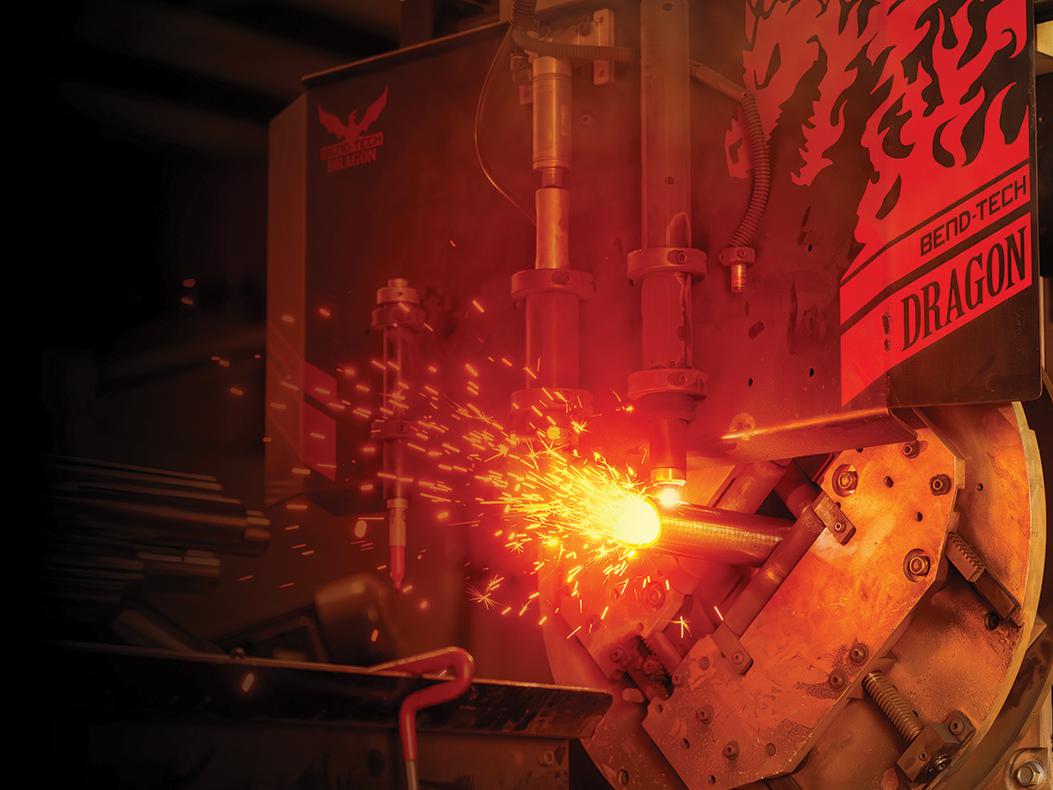Stepped-Up Setups
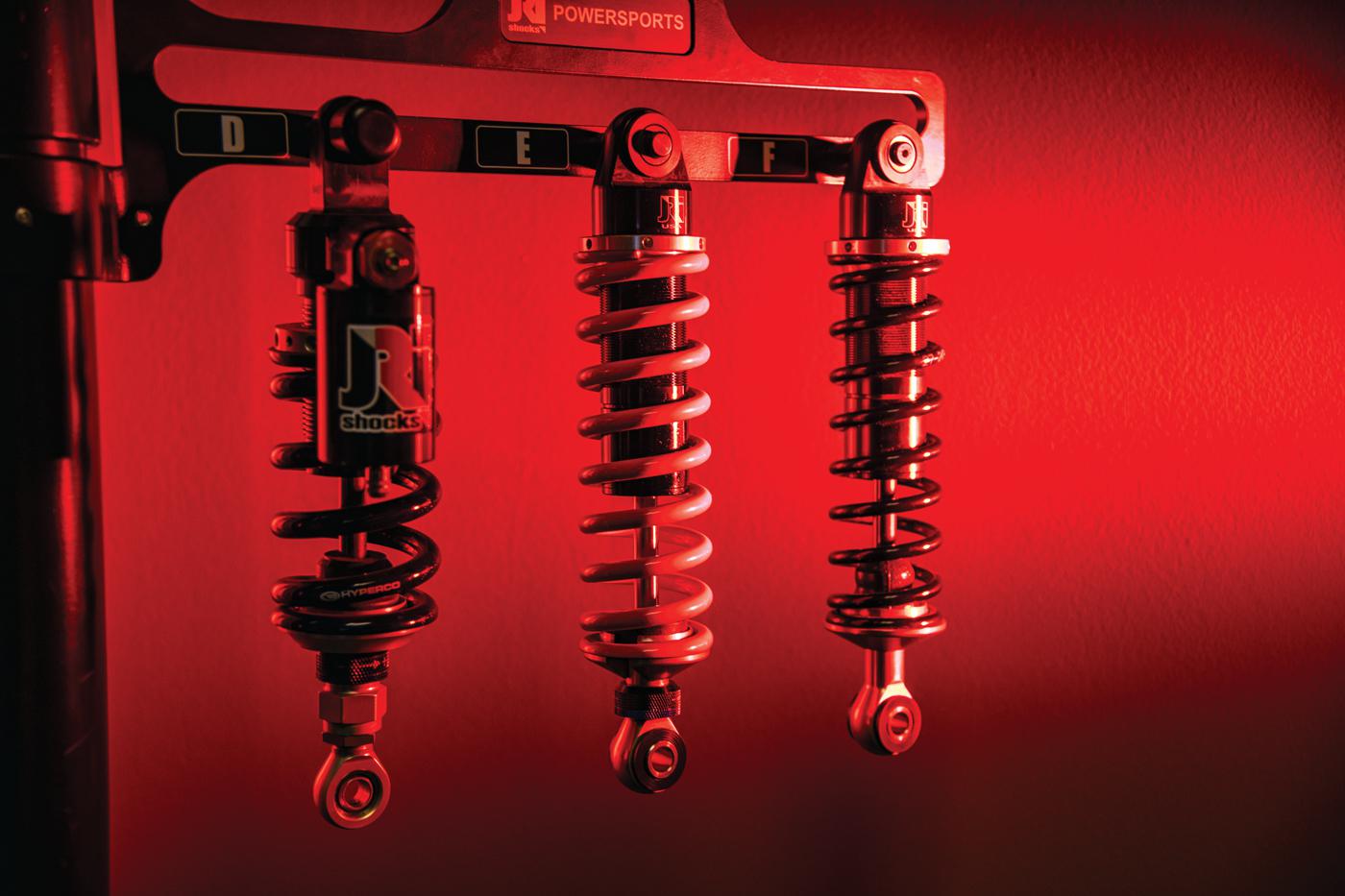
While manufacturers aren’t completely reinventing their suspension components, they are releasing new products with notable improvements for better results in 2021.
Suspension setup and tuning continues to play a pivotal role in the development of competitive race cars. Although the fundamental strategies that teams call upon to more effectively put power down at the drag strip or coax more cornering speed out of the car have held true for decades, the methods and components used to accomplish those goals continue to evolve. And that, in turn, has seen trial and error give way to a more sophisticated and nuanced approach.
“The design of suspension components often evolves gradually over a long period of time, and big innovations usually take a while to see widespread adoption,” said David Cardey of Eibach Springs, Corona, California. “But the way racers are using the available components changes at a much faster rate, and those trends can help indicate where development focus is headed.”
Cardey said that as load raters and pull-down machines have become more accessible in recent years, teams are using a more targeted technique when it comes to tuning in general. “With the car simply sitting on a flat surface it’s not going to represent the forces each corner is seeing on a dirt track,” he explained. “For example, a pull-down machine allows you to pull down or push up to get the car at a race position to really see what the wheel loads are out on the track. More and more people are starting to realize that they’re racing against folks who are using these machines, so it’s becoming an increasingly important part of a lot of teams’ racing programs.”
And as such, the newest products and trends in competition suspension are more about providing racers at all levels of motorsports with the tools to better dial in their cars than it is about reinvention.
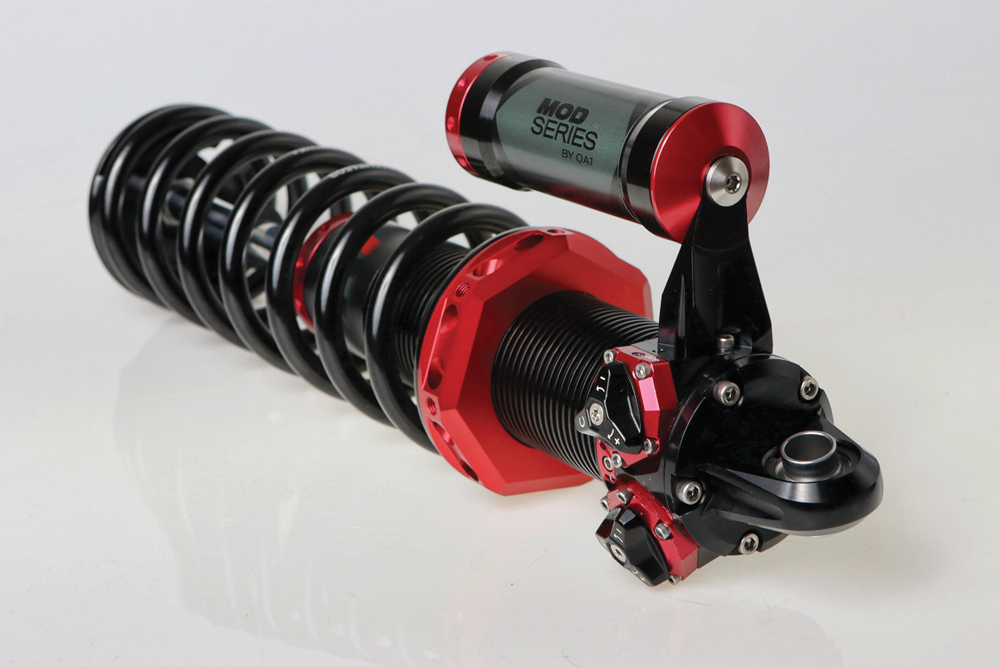
“This past season has obviously been really unique in that racers haven’t had as many options for events to go to as they did in the past,” said Dave Kass of QA1 Motorsports, Lakeville, Minnesota. “So what we’re seeing a lot of racers do is establish a number of different setups for the varied events that are available to them, and that requires components that can be easily dialed in to the requirements of each.”
PRECISION TUNING
Kass cited QA1’s new MOD Series shocks as an example of this development trend. “This design transforms how racers look at tuning their shocks. What makes it unique are the patented QuickTune valve packs. These packs allow you to completely remove the existing valving in the shock and put in new valving without removing anything but the valve pack. It’s a totally dry system that gives you the capability to completely change the shock characteristics in about two or three minutes. In that respect, it’s unlike any other shock on the market.”
With a conventional system, shock valving changes would normally require the shock to be removed from the car and disassembled in the pits to be re-valved or sent to a shock tuning specialist to make changes. “There’s a lot of time and effort involved in that—it’s usually not feasible in between runs or sessions in a given weekend,” Kass said. “But with this design you can just keep a handful of these valve packs in your toolbox—each one is about the size of a quarter—and pop them in and out of the shock to change your valving as needed, depending on what you’re doing and how the car is behaving. Each pack is held in with five Allen bolts—unbolt the one, pop in the new one, done. And if you think about it, in terms of corner balancing the car and getting everything dialed back in from a chassis standpoint, it’s really convenient because you don’t need to mess with any of that.”
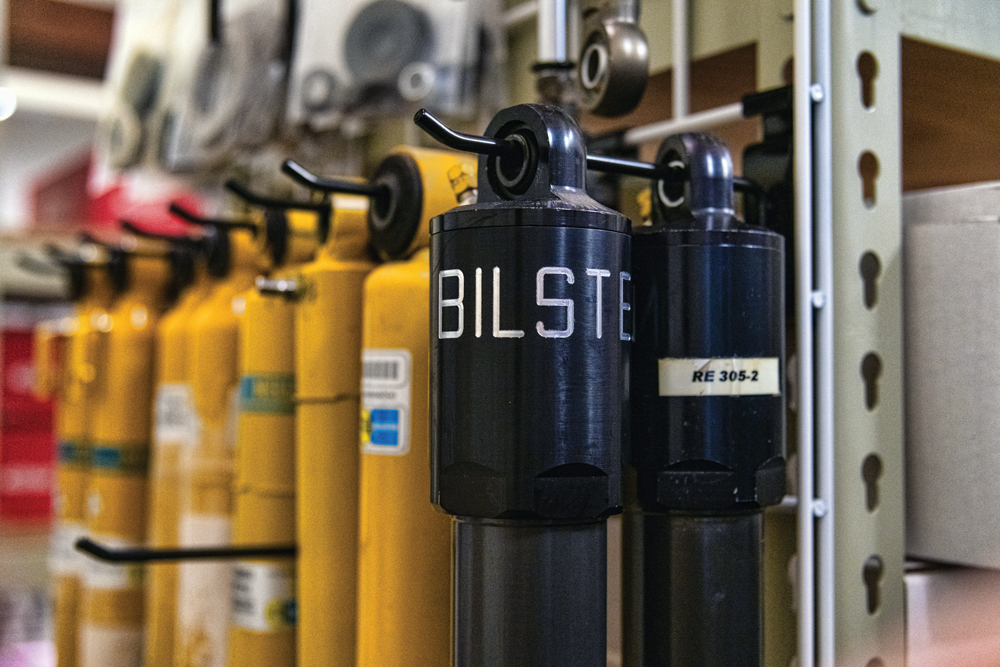
He added that the development of the MOD Series shock was influenced by identifying an area where racers’ ability to tune their cars at the track had plateaued. “We really wanted to make sure we were building a shock that was solving a legitimate problem that people were having out there in the field. We wanted to solve an issue that hadn’t been solved before,” he said.
VERSATILITY BY DESIGN
With production-based competition continuing to see strong interest across various motorsports disciplines, the ability to use race technology within the confines of OE suspension designs has also become increasingly important for many racers.
“Our new universal strut insert allows us to take an existing strut application like a Ford Mustang or a Porsche 911, remove the stock internals of that strut housing, and simply drop our insert in,” explained Aaron Lambert of Penske Racing Shocks, Reading, Pennsylvania. “In the past we’ve often been somewhat limited on the actual fitment of our inverted strut, so by designing a universal insert, we can make that racing technology work within the packaging of a stock strut. And that also allows customers to utilize existing spring mounts and things like that, so it’s a simple, bolt-in application.”
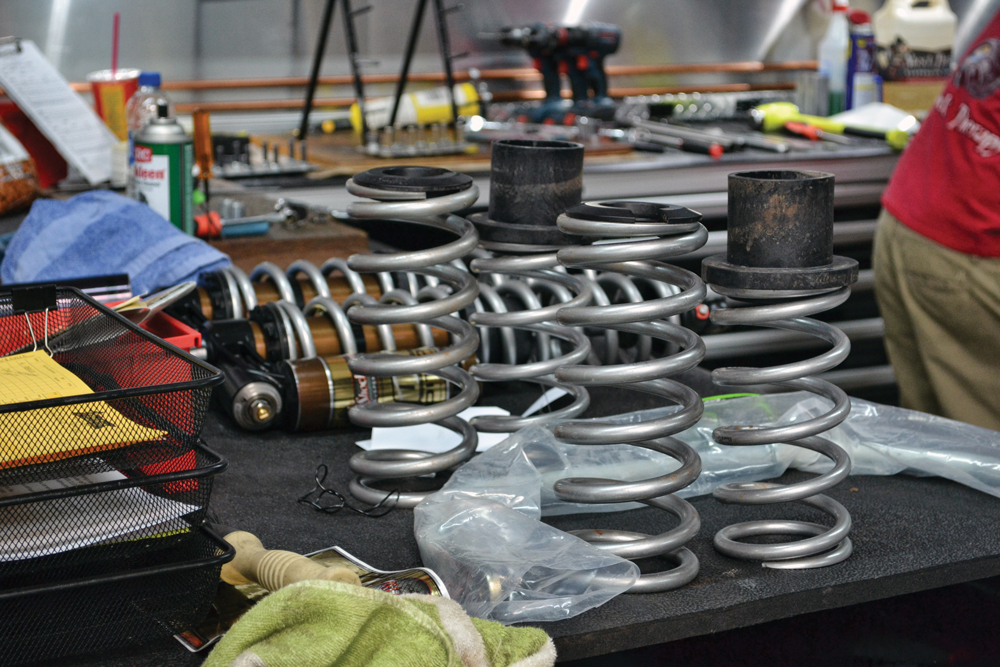
Lee Grimes of KONI North America in Hebron, Kentucky, said that the use-case for universal strut inserts also goes beyond late model production-based race cars. “Some older cars just aren’t supported by the aftermarket at this performance level, and there are a lot of people who’re building these cars to higher degrees than they have been in the past. A 25-year-old Toyota MR2 can be really fast with some modern upgrades, but there aren’t a lot of plug-and-play solutions out there for those suspension systems. By being able to upgrade the existing strut housing with our racing single or double-adjustable universal inserts, you’re effectively solving that problem. We’re seeing these used more and more not only in grassroots endurance series like ChampCar and American Endurance Racing, but also in SCCA and NASA autocross and time attack events. And those solo disciplines continue to have the biggest car counts in road racing.”
ADAPTING TO THE SITUATION
In disciplines like dirt and asphalt circle track racing, suspension setups often require a highly specialized approach in order to maximize stability and grip, and that’s led manufacturers to develop a number of different ways to approach common issues.
“We recently developed a device that’s designed to add pre-load to existing bump springs,” said Jason Enders of RE Suspension, Mooresville, North Carolina. “These are useful when you’re looking for a specific load number but want the least amount of rate gain throughout the suspension travel. That’s important when you’re trying to really mitigate instability on rough tracks and prevent the suspension from over-traveling, which in turn helps to improve grip. Using these bump spring preloaders in the left front of an asphalt car can help to control sway bar wrap—as the suspension goes down, that bump stop is not gaining near the amount of load that it would otherwise. We’re basically eliminating variables; if we can help reduce some of that bar wrap by maintaining a more stable platform that doesn’t rely on that bar so much, your bite off of the corner tends to be a lot better. So, where you’d normally have to run a 1,500-lb. bump spring in a corner of the car, we can back that off to, say, 800 lbs. and not gain the rate through the suspension travel that we would with the 1,500-lb. bump spring.”
Enders said that while other preloaders have been on the market for a while now, RE Suspension has taken a different approach with its design. “The reason we developed this is because what was out there was big and heavy—they’re like a big can that you put the bump spring inside of and screw together. So instead of grabbing the outside diameter of the spring, we grab the inside diameter. Weight is always a concern when you’re building a competitive race car, and this design allowed us to take a lot of weight out of it. If you’re looking at two different products that do the exact same thing, and one weighs half as much as the other, the benefit is pretty obvious.”
Penske’s approach to maximizing stability in dirt late model racing focuses on making it easier for racers to adjust the spring rate with an air shock design, according to Lambert. “The shock itself works like any normal damper, but then it has an external body that seals and creates an air chamber that we use as the spring,” he explained. “By designing it that way, it allows you to simply adjust the air to change the spring rate. That really allows these guys to dial in the compliance to make sure the car maintains grip and doesn’t lose stability over bumps. And by being able to tune your spring rate with air, it also saves the customer money because they don’t need to have a ton of different coil springs in their inventory.”
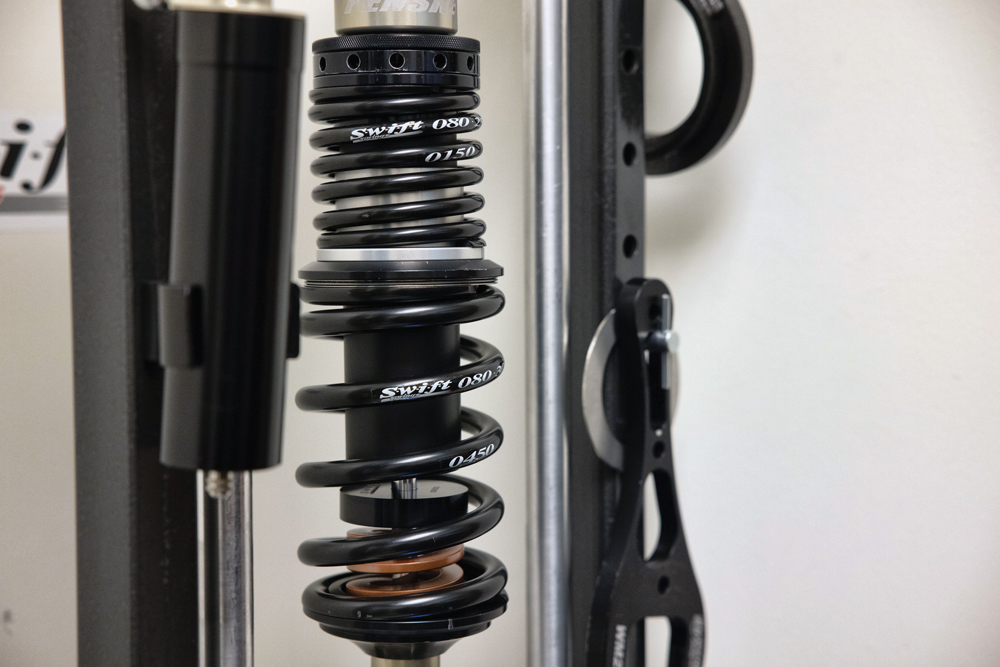
For off-road racers, much of the suspension tuning strategy is centered on effectively maintaining stability over a wide variance of terrain, and accomplishing that requires the system to behave differently depending on the specific situation. This, too, has brought a number of different solutions to the table.
“Stacked setups are becoming very popular in the UTV market,” Cardey said. “By using two springs in series, the dual setup allows them to have a softer ride over the small choppy stuff and also have a heavier rate when the vehicle is really starting to travel. If the rate is too heavy the car will want to buck over everything, and if the setup is too light it’ll want to bottom out, so it’s all about finding the right combination for the car and the terrain of the event.”
While the concept is similar to that of a single, progressive-rate spring, using two springs in series allows for greater adjustability. “The problem with a progressive spring is that it’s locked into specific rates and a specific point of transition,” he added. “With a dual-rate design, you have a slider and lock-out that allow you to control when that transition happens in the suspension travel, and you can change the rate of each spring by simply swapping one out for another, so there’s a lot of tuning available that you can’t do with a progressive spring.”
Spring rubbers are also a popular option for racers who’re looking to change the effective rate of a linear spring without actually changing out the spring itself. “If you’re in practice and you’ve got a 300-lb. right rear spring in the car and want to see if a 325-lb. or 350-lb. spring is going to work better, you can put one of these in and temporarily change that spring rate,” Enders said. “It’s a quick way to determine if that’s what you need in order to improve the car or not. After practice a team might take that spring rubber out and put in a 350-lb. spring and go racing, but some folks will run spring rubbers for an entire season or more.”
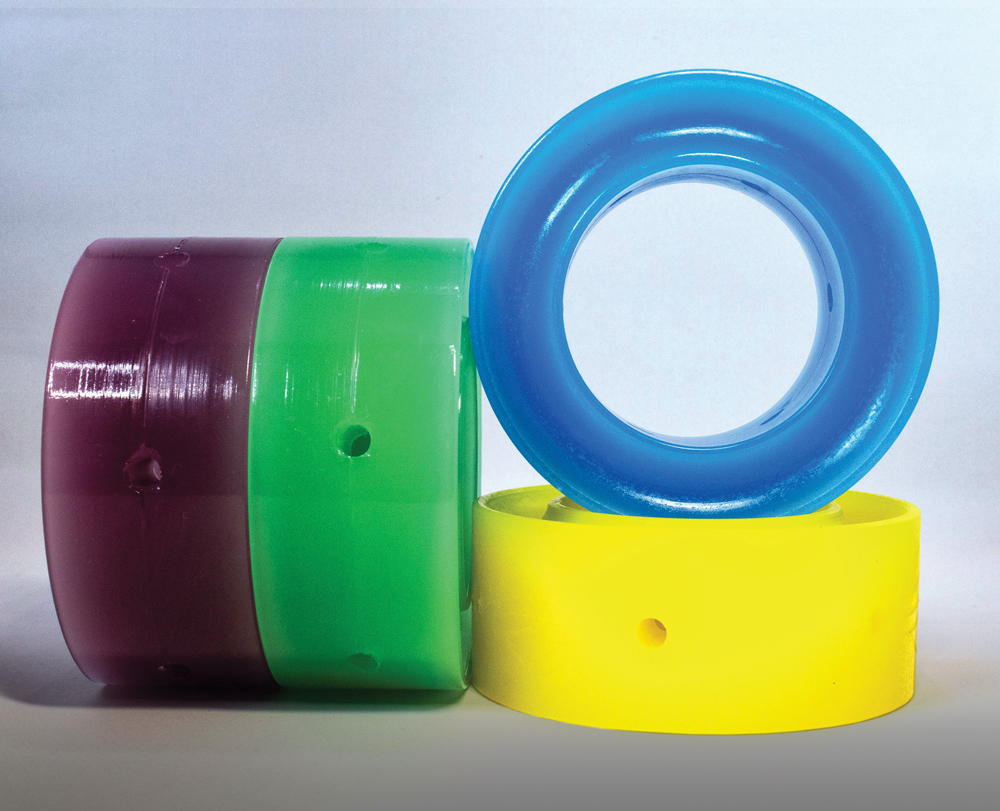
He also noted that these spring rubbers can be a low-cost way to turn a linear spring into a progressive one. “When you start adding multiple spring rubbers, you’re essentially turning it into a progressive spring because it’s functioning at different spring rates across the travel of the suspension. So that’s become a pretty big tuning tool—it’s becoming more and more common in asphalt circle track racing for teams to run a right rear spring with four or five spring rubbers in it to make it progressive. And the cool thing about it is that you can actually tune that progressiveness, both with the durometer of the spring rubber material and the height of it. That allows you to determine when it gets progressive, and by how much,” Enders added.
SOURCES
–
Accu-Force Dynos and Testers
accuforcetesters.com
Aldan American
aldanamerican.com
Calvert Racing
calvertracing.com
Eibach Springs
eibach.com
Energy Suspension
energysuspension.com
KONI North America
koni-na.com
KW Automotive
kwsuspensions.com
Magnitude Performance
magnitudeperformance.com
Maxwell Industries
maxwellindustries.com
Penske Racing Shocks
penskeshocks.com
Prothane Motion Control
prothane.com
QA1 Motorsports
qa1.net
RE Suspension
resuspension.com
Summit Racing Equipment
summitracing.com
 MEMBERSHIP LOGIN
MEMBERSHIP LOGIN JOIN PRI
JOIN PRI
